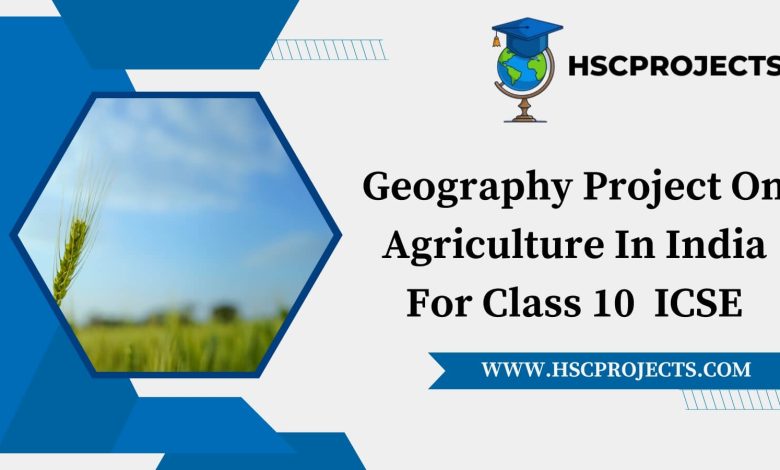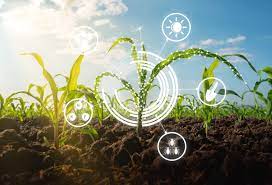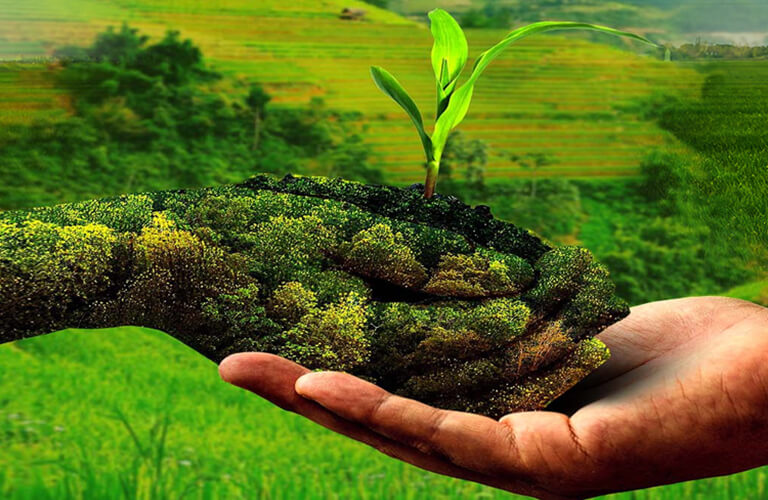
Acknowledgment
Completing this comprehensive exploration of agriculture in India has been a rewarding endeavor, and it is with immense gratitude that I extend my thanks to those who have contributed to the realization of this project. I would like to express my heartfelt appreciation to [Your Institution/University], for providing the academic platform and resources essential for undertaking this research.
My sincere gratitude goes to my [Supervisor/Instructor], whose guidance and insights were invaluable throughout every stage of this project. Their expertise and constructive feedback greatly enriched the depth and quality of the study.
I extend my appreciation to the farmers and agricultural experts whose experiences and knowledge formed the bedrock of the insights shared in this project. Their willingness to share their perspectives has added a practical dimension to the theoretical framework, providing a more nuanced understanding of the challenges and opportunities in Indian agriculture.
I also want to acknowledge the support of my peers and classmates who offered encouragement, shared resources, and engaged in insightful discussions that stimulated critical thinking.
Furthermore, I would like to express my gratitude to the government agencies and institutions whose initiatives and schemes have played a pivotal role in shaping the agricultural landscape of India. The information and data provided by these entities were instrumental in the comprehensive analysis presented in this project.
Lastly, but certainly not least, I am deeply thankful to my family and friends for their unwavering support and understanding during the course of this project. Their encouragement and patience have been the pillars that sustained me through the challenges and triumphs of this academic pursuit.
This project stands as a collective effort, and each contribution, whether big or small, has played a crucial role in its successful completion. Thank you to everyone involved in making this endeavor a reality.
Introduction
In the vibrant tapestry of India’s diverse landscape, agriculture emerges as the lifeblood, intricately woven into the cultural and economic fabric of the nation. This project embarks on a comprehensive exploration, delving into the myriad facets that define the agricultural panorama of India. With its rich heritage and a significant contribution to the livelihoods of a vast population, agriculture stands as a dynamic force shaping the country’s trajectory.
The objectives of this project are manifold. We seek to unravel the profound significance of agriculture in the Indian economy, investigating the diverse types of crops cultivated across different regions. By analyzing the intricate interplay between climate, geography, and agricultural practices, we aim to gain insights into the resilience and adaptability of Indian farmers. Moreover, the infusion of technology into the agricultural sector and its transformative impact serve as focal points, illustrating the evolution of traditional practices.
As we journey through the project, we confront the challenges faced by Indian farmers, particularly the majority comprising small and marginal cultivators. Land degradation and water scarcity cast shadows on the landscape, demanding innovative solutions and sustainable practices. In response, we explore not only the challenges but also the solutions and government initiatives designed to fortify the agricultural sector against adversity.
In this narrative, the project unveils the rich tapestry of major crops cultivated, the influence of climate and geography, and the technological milestones that have shaped modern Indian agriculture. It is a story that intertwines the struggles, successes, and aspirations of those who toil the land, contributing to the nation’s sustenance.
This exploration is not merely an academic pursuit; it is a journey into the heart of a crucial sector that sustains the livelihoods of millions. Through this project, we aim to foster a deeper understanding of the complexities and potentials of Indian agriculture, recognizing its pivotal role in the nation’s past, present, and future.

Types of Agriculture in India
- Subsistence Farming:
- Subsistence farming, a fundamental form of agriculture, epitomizes the intimate connection between cultivation and sustenance for individual families or communities. In the context of India, subsistence farming is widespread, particularly among small and marginal farmers. Here, the primary objective is self-sufficiency, with crops grown primarily to meet the basic needs of the farmer and their family.
- In subsistence farming, the choice of crops is often dictated by local preferences, climatic conditions, and available resources. Staple food crops like rice, wheat, millets, and pulses are commonly cultivated, forming the dietary foundation for the farming households. The scale of operations is typically small, and traditional farming methods are frequently employed, emphasizing the importance of maintaining a balance between the cultivated land and the nutritional needs of the family.
- While subsistence farming is vital for food security at the local level, it often comes with challenges. Limited access to modern technology, inadequate irrigation facilities, and vulnerability to unpredictable weather patterns can pose obstacles to optimizing yields. Despite these challenges, subsistence farming remains a resilient and time-honored practice, ensuring a steady source of sustenance for numerous households across India. The intricate interplay between crops, familial sustenance, and cultural practices underscores the profound significance of subsistence farming in shaping the agrarian landscape of the country.
- Commercial Farming: Commercial farming in India represents a strategic and profit-oriented approach to agriculture, focusing on the mass production of crops for sale in the market. This method is often characterized by large-scale operations, mechanization, and a deliberate selection of crops with high market demand. Regions known for commercial farming contribute significantly to the country’s economic prosperity by generating revenue through the cultivation of cash crops such as cotton, jute, sugarcane, and oilseeds.
- Intensive Farming: Intensive farming is a modern agricultural method designed to maximize yield per unit of land through meticulous and resource-intensive practices. This approach involves high inputs, including fertilizers, pesticides, and advanced irrigation techniques, to cultivate crops in a more controlled environment. In India, intensive farming is frequently employed for high-value crops like fruits, vegetables, and floriculture. The adoption of modern technologies and scientific methods enhances productivity, making intensive farming a crucial component of the agricultural landscape.
- Extensive Farming: In contrast to intensive farming, extensive farming spans larger land areas with lower inputs per unit. This method often relies on traditional farming practices and is well-suited for crops with lower market value or those requiring more significant space for cultivation. Extensive farming is prevalent in regions where land is abundant, and the pressure on optimizing yield is comparatively lower. It emphasizes the utilization of larger plots and minimal inputs, showcasing the adaptability of Indian farmers who tailor their approaches based on local conditions and available resources.The coexistence of commercial, intensive, and extensive farming methods contributes to the diversity and resilience of Indian agriculture. These approaches, each with its unique characteristics, collectively shape the nation’s agrarian landscape and play a vital role in meeting the diverse needs of its population.
Major Crops in India
India’s agricultural diversity is showcased through the cultivation of a myriad of crops, each contributing significantly to the nation’s food security and economic well-being. Explore the links below to delve into the major crops that form the backbone of India’s agrarian landscape:
- Rice: An integral part of India’s staple diet, rice cultivation spans diverse agro-climatic regions, making it a crucial food crop.
- Wheat: As the second most important staple crop, wheat cultivation plays a pivotal role in ensuring food security, particularly in the northern regions of the country.
- Millets: Diverse varieties of millets, including sorghum and pearl millet, are cultivated across India, contributing to both food and fodder requirements.
- Pulses: Leguminous crops like chickpeas, lentils, and peas are vital sources of protein, fulfilling dietary needs and enhancing soil fertility.
- Cotton: A major cash crop, cotton cultivation is widespread, supporting the textile industry and contributing substantially to the agricultural economy.
- Jute: Known as the “Golden Fiber,” jute cultivation is prominent in India, providing raw material for various industries, especially textiles.
- Sugarcane: A key industrial crop, sugarcane is cultivated for sugar production and plays a significant role in the agro-based economy.
- Oilseeds: The cultivation of oilseeds, including mustard, soybean, and sunflower, contributes to edible oil production, ensuring culinary needs are met.

Influence of Climate and Geography
The agricultural practices in India are profoundly influenced by the country’s diverse climate and geography. The annual monsoon, a pivotal factor, dictates the cropping patterns and success of harvests. The influence of monsoons on Indian agriculture is multifaceted, affecting sowing seasons, crop choices, and overall productivity. Understanding the agro-climatic zones and their specific characteristics becomes crucial in optimizing agricultural output. Different regions, from the arid landscapes of Rajasthan to the fertile plains of Punjab, exhibit distinct agro-climatic conditions, requiring farmers to adapt their cultivation strategies accordingly. This project delves into the intricate relationship between climate, geography, and agriculture, shedding light on how these factors shape the farming landscape across the nation.
Technological Advancements in Agriculture
The evolution of technology has ushered in transformative changes in Indian agriculture, catapulting it into a realm of innovation and efficiency. The Green Revolution, a historical turning point, marked the widespread adoption of modern agricultural practices, including the use of high-yielding varieties, fertilizers, and pesticides. This project traces the historical background and significance of the Green Revolution, exploring its profound impact on crop production, farmer income, and overall agricultural productivity. Furthermore, the project addresses contemporary advancements, such as precision farming, which harnesses technology like GPS, sensors, and data analytics to optimize resource utilization. By examining these technological frontiers, the project aims to provide insights into the dynamic landscape of modern Indian agriculture, where innovation is a driving force for sustainability and productivity.
Conclusion
In the tapestry of India’s agricultural landscape, this project has unraveled the intricacies that define the nation’s agrarian identity. From the foundational practices of subsistence farming to the strategic endeavors of commercial and intensive farming, each thread contributes to the resilience and adaptability woven into the fabric of Indian agriculture. The cultivation of major crops, from staple grains to cash crops, paints a vivid picture of the diverse harvests that sustain the nation.
The challenges faced by Indian farmers, including those posed by small and marginal landholding, land degradation, and water scarcity, underscore the need for sustainable and innovative solutions. Yet, amidst these challenges, the project illuminates the remarkable initiatives and government schemes that strive to fortify the agricultural sector, providing a safety net for those who toil the land.
The influence of climate and geography, intricately intertwined, shapes the agricultural practices across diverse agro-climatic zones. The monsoons, both a blessing and a challenge, play a pivotal role in determining crop patterns and success. The project has navigated through these agro-climatic nuances, recognizing the importance of understanding local conditions in optimizing agricultural practices.
Technological advancements, from the historical Green Revolution to contemporary precision farming, showcase the transformative power of innovation in Indian agriculture. This dynamic interplay of tradition and technology reflects the resilience of farmers who adapt to change while staying rooted in age-old practices.
In conclusion, this project serves as a panoramic exploration, capturing the essence of India’s agricultural journey. It underscores the significance of sustainable and inclusive practices for the prosperity of the nation. As the agricultural sector continues to evolve, embracing both challenges and opportunities, the lessons gleaned from this study become guideposts for a future where agriculture remains the steadfast backbone of India’s growth and sustenance.
Certificate of Completion
[Student’s Name][Class/Grade Level]This is to certify that I, [Student’s Name], a [Class/Grade Level] student, have successfully completed the “Geography Project On Agriculture In India For Class 10 icse.” The project explores the fundamental principles and key aspects of the chosen topic, providing a comprehensive understanding of its significance and implications.
In this project, I delved into in-depth research and analysis, investigating various facets and relevant theories related to the chosen topic. I demonstrated dedication, diligence, and a high level of sincerity throughout the project’s completion.
Key Achievements:
Thoroughly researched and analyzed Geography Project On Agriculture In India For Class 10 icse.
Examined the historical background and evolution of the subject matter.
Explored the contributions of notable figures in the field.
Investigated the key theories and principles associated with the topic.
Discussed practical applications and real-world implications.
Considered critical viewpoints and alternative theories, fostering a well-rounded understanding.
This project has significantly enhanced my knowledge and critical thinking skills in the chosen field of study. It reflects my commitment to academic excellence and the pursuit of knowledge.
Date: [Date of Completion]Signature: [Your Signature] [School/Institution Name][Teacher’s/Examiner’s Name and Signature]
In order to download the PDF, You must follow on Youtube. Once done, Click on Submit
Follow On YoutubeSubscribed? Click on Confirm
Download Geography Project On Agriculture In India For Class 10 ICSE PDF





